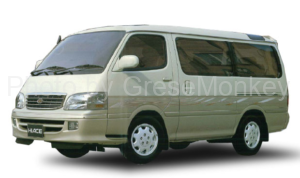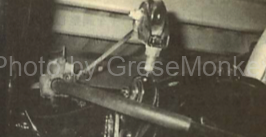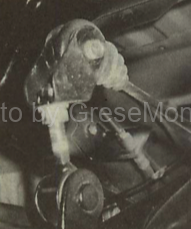1997 Toyota · Hiace model: KC-LY111 engine model: 3L mileage: 26,000km

Hiace car inspection and maintenance
Goods receipt at the first car inspection. For a freight wagon, the distance traveled is small and it is a good vehicle. Because this car is a flat single just-low grade, the floor of the cargo bed is straight, the front wheel tire is 175 / R148 PR, and the rear wheel tire is 235/50 R 13 are anomalous combinations.
As usual it starts working on vehicle inspection and maintenance. Normally, in vehicles with less initial mileage or mileage, do not handle handling of brakes. It seems normal to change brake oil as it is, but since it is a considerably old car, I personally think that it is necessary to disassemble the brake and adjust it every time for each inspection. I wonder if it is never excessive maintenance. In this time as well, disassembling the rear drum brake and replacing the wheel cylinder cup kit, replacing the piston seals with the front brake disc caliper OH, bleeding the brake fluid piping line and replacing the brake fluid.
It is one indication of inspection, but the difference between the transparency of the brake fluid and the contamination of the brake fluid which passed the years in the wheel cylinder or the brake pipe is obvious. I think that liquid which is dirty to brown due to heat generated from the brake and deterioration of rubber parts should be replaced periodically as well.
The rear wheel brake does not work
When the maintenance work is over and the inspection line is passed, the braking force of the front wheel brake is normal, but the braking power of the rear wheel brake was only 40 to 50 kg.
Even if I stepped on the brake pedal carefully, the tire spun on the tester and the brake was almost ineffective. However, pulling together with the side brake increases the braking force, so it is not a malfunction of the brake lining and the hydraulic pressure applied to the rear wheel brake seems to be low. Therefore, I again disassembled the cylinder cup kit of the rear wheel brake and inspected, but no abnormality was seen. I will redo the air removal work again, but no braking force.
Bring the vehicle to the manufacturer dealer and consult
Since there is no mistake in the maintenance work of the brake itself, I will bring the vehicle to a nearby manufacturer dealer and consult it. Frontman says, “This type of vehicle controls the hydraulic pressure to the rear wheels with a P valve (proportioning valve) in order to prevent the rear wheel brake from being too effective when the empty car” It was that. Actually checking the braking force of the rear wheel brake on the inspection line did not reach the specified value, so we decided to adjust this P valve.
Adjust P valve
The fact that the braking force of the rear wheels is low when empty is that the braking force of the rear wheels should rise if they are in the same state as when they are loaded. In this vehicle, the P valve operates according to the loading load, and it is a mechanism to raise the braking force of the rear wheel. Also, since the adjustment valve bolt of the P valve is attached to the position of the rear axle (differential gear), it can be adjusted mechanically by changing this length.
By extending the adjustment bolt on the rear axle a few centimeters and creating a condition where the load is applied to the rear wheel (load is loaded to some extent), the braking force could be raised to the specified value.

What is P valve
It is also installed in ordinary passenger cars and mini vehicles, but prevents the braking force lock of the rear wheels due to the change of the loading condition of the truck / van system baggage, and prevents rear wheel runout, it is installed in the brake fluid piping line It has been incorporated. It is a braking force adjustment valve for preventing the rear wheel from being locked ahead of the front wheels when the brake is originally applied.

Lift up and brake adjustment
Simply because of the lift-up of the car with the vehicle inspection and maintenance, the rear axle is in a state of sitting and no load is applied. At this time, the P valve is in a non-operating state. Even if the brake fluid is exchanged and air bleeding is carried out in this state, if the car is lowered from the lift, a load is applied to the rear wheel, whereby the P valve And the air accumulated in the P valve accumulated in the piping line of the brake fluid and it is considered that the braking force was dropped. On the contrary, if the air removal work of the brake piping line is carried out by jacking up only the rear axle and making the P valve slightly operated, if air bleeding is carried out, the air appropriately comes out and adjusts the P valve It may have been able to obtain appropriate braking force even if not.
Originally, adjustment of the P valve should be unnecessary at the time of vehicle inspection and maintenance. What you need to adjust is when loading heavy loads and applying extreme loads, or when adjusting the vehicle height by incorporating custom parts. Since this time we adjusted for obtaining appropriate braking power in the car inspection and maintenance, the user explained to the effect that “the rear wheel brake may be overdone than before because the rear wheel brake was adjusted again” It is necessary to keep it. It is pleased that it got better by raising the braking power or because there is a fear that it can be complained that the rear wheel comes in touch and it got dangerous. From day-to-day, I think that it is essential to explain the details of vehicle inspection and maintenance at the time of delivery.